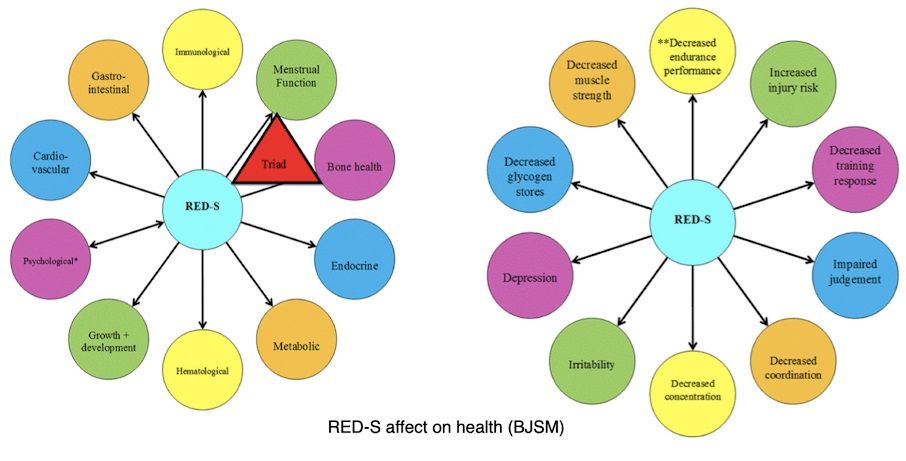Injuries are a common and frustrating component of sport for many endurance athletes unfortunately, but there are ways that runners and triathletes can reduce the risk of suffering bone stress injuries...
What are bone stress injuries?
Bone stress injuries (BSI) are common amongst runners. In fact, 0.7-20% of all sports medicine injuries that present to clinicians are reportedly bone stress injuries (Bennell, et al 1999).
For triathletes, it's common to experience bone stress in the lower limbs, including the thigh (femur), shin (tibia), and foot (e.g. navicular, metatarsals), and, at times, the pelvis.
The best way of looking at bone stress injury is by viewing them along a pathology continuum, from normal bone remodelling to bone pathology:

How to minimise the risk of bone stress injuries
When it comes to attempting to prevent or minimise the risk of incurring a bone stress injury there are several (five) keys to note as outlined below.
Avoid training errors
Training errors are the chief reason that runners and triathletes develop running-related injuries.
In fact, the literature reports 60% of all running related injuries are due to "training errors". Most athletes are all too familiar with the ‘classic’ training faux pas of: too much, too soon, too intense, and too close together.
It’s worth also keeping in mind that sudden changes in workload (‘spikes’) may increase injury risk.
Specifically for triathletes, attempting to avoid scheduling hard run sessions on tired legs may be helpful in reducing the risk of bone stress injuries.
Fuel properly
Weight conscious endurance athletes who oftentimes ‘obsess’ or over-focus on being ‘lean’ can fall victim to being ‘under-fuelled’. It’s easy to underestimate just how much fuel (food/caloric intake) is required to power basic homeostatic functions (including while we sleep!).
Then throw ‘on top’ the high energy expended with triathletes' training loads and the endurance athlete can fall victim to the perils of RED-S (Relative Energy Deficiency in Sport).
Such ‘perils’ can include health & performance decrements, including reduced bone health and heightened risk of sustaining a bone stress injury.
A simplistic piece of advice I give to endurance athletes is to ‘eat more than you think you need’. In most endurance athletes that present with a bone stress injury in the clinic there tends to be an under-fuelling component to the injury onset "Margo Mountjoy (Clinical Prof, Sports Medicine Physician) Relative Energy Deficiency in Sport (RED-S)").
Know the RED-S warning signs
Building on the theme of RED-s, I feel that it's imperative that endurance athletes know the signs of RED-S.
These can include menstruation loss or abnormalities for female athletes and erectile dysfunction for male athletes.
For the female athlete, the monthly menstruation cycle really is a ‘scorecard’ of health. While there can be multiple causes for menstruation abnormality if a female endurance athlete misses 3 consecutive periods, there needs to be a high index of suspicion that the athlete may be in RED-S.
Blood tests to ascertain the sex hormone status of both male and female athletes is typically part of the diagnostic work up.
The athlete will need dietetic and sports physician input to typically address the under fuelling.
RED-S is common in both male and female middle and long distance runners. Koehler et al. (2013) reported RED-S to be more common in female (58%) than male (51%) endurance athletes.
In elite athletics, the prevalence of clinical low energy availability was 31% and 25% in female and male middle- and long-distance athletes respectively (Heikura et al., 2018).
Below are diagrams from the IOC’s 2018 Consensus Paper on RED-S which illustrate the effect of RED-S on health and performance.

Check your Vitamin D status
The role of Vitamin D is to facilitate absorption of calcium to ensure bone growth and remodelling.
There exists a high prevalence of Vitamin D deficiency in runners, with low Vitamin D levels having been associated with increased incidence of BSI (Ruohola, et al, 2006).
Bone health experts recommend between 1000 and 2000 International Units (IU) of Vitamin D a day for maintenance of optimal Vitamin D levels.
Bone mineral density
One of the key yet sometimes overlooked bone stress injury risk factors is the health of the athlete’s bone. The bone health of an athlete plays a key role in resisting the strain and resultant accumulation of damage that occurs with endurance running.
If you have had a prior BSI, it may be worth considering determining your bone mineral density. Bone health of athletes can be determined by dual energy x-ray absorptiometry (DXA) scanning which determines an athlete’s bone mineral density (BMD).
Lower bone mineral density is correlated with heightened risk of bone stress injury.
For athletes that have had a history of more than one bone stress injury I find it clinically important to assess bone health via DXA assessment.
I hope the above information is useful. It’s important to note that even doing ‘everything seemingly right’, injuries (and running-related injuries in particular) can still occur. If you're concerned that you may have early signs of a bone stress injury, please consult with your local trusted medical practitioner.
If you're experiencing a bone, tendon, or joint-related concern, you can book a tele-health consultation with a member of the POGO team.
